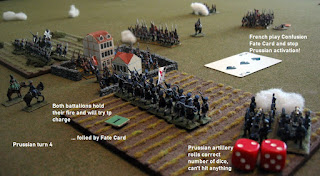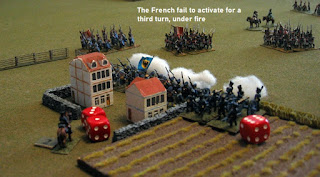Another
story of my father-in-law’s service in the Korean War, in his own words. Any notes
of mine are in italics.
The
Combat Infantry Badge (CIB) is a unique award made only to certain solders. To
qualify one must be assigned to an Army infantry unit which has been in combat,
in which you have participated in ground action for at least 30 days. No other
military member is eligible, in spite of Hollywood pinning the CIB on
such as Military Police. There is a similar award, the Combat Medical Badge,
for those who served as Medics with the same qualifications.
The CIB was established in 1943, a critical year during World War
II. They were made from silver probably because silver was plentiful and
zinc and similar medals were needed in the war effort. When the Korean
war started the stock pile of WW II silver CIB medals was sent over along with
nearly all of the WW II armament that we used during that war. That is were
this story begins.
On May 20, 1953 I was sitting in my command bunker
on the front line when a messenger arrived with a long awaited order for me. I
was to report back to 23rd Regiment Head Quarters for a lengthy dinner with the
Regimental Commander. I, and three other officers were soon to start the long
trip half way around the world back home. This was our farewell party and
dinner.
The dinner was held in the Reg. Officers Club which
was a large tent. There was a bar in the back of the tent and tables in front.
I had been there a number of times while back at regiment for showers, clean uniform exchange and other business. The Officers Club was the best place to
find out how the war was going and exchange gossip. The bar open from 5 to
exactly 6 PM. Drinks were free, many bottles to choose from but ice was never
available.
I had heard stories about a legionary silver punch
bowl but I saw it for the first time when I walked into the club three days
before starting for home. It was huge, reputed to be the largest silver vessel
in the world, 36 inches in diameter and 23 inches high. It included matching
silver cups, one for each unit of the Regiment plus one for our attached French
Battalion. Its true origin follows.
In late 1951, a major had the bright idea and, with
the approval of the then Reg CO, took all of the available silver Combat
Infantryman Badges and Combat Medic Badges (total 5,610) to Seoul where they
were melted down. It took 30 silver smiths four months to craft the
punch bowl which they delivered to the 23rd Infantry Regiment in May, 1952.
By then a new Regimental CO was in charge, Col. Joseph Stillwell,
son of the famous General Stillwell. When he found out where the silver came
from he was furious. He had the Major transferred to another division and
ordered the punch bowl crated up and kept out of sight.
A few weeks before my party, Col. Stillwell was
transferred to a new assignment, probably because no one wanted to be
responsible for his safety while he was under their command. His replacement,
Col. Chester Dahlen, had the bowl brought out and shined up just in time for my
farewell dinner.
The official origin story is that all the men from
the 23rd Regiment voluntarily donated their CIB’s so that the Regiment could
have a lasting monument to their accomplishments in Korea. It goes on to say
that the bowl had been presented to the 23rd Infantry Regimental Officers Club
where it would serve as a reminder of the loyalty and admiration that the
troops felt for their regiment.
In any case, CIB recipient received the certificate
of accomplishment but no badge during my stay in Korea. I purchased mine in
Japan while there on R&R.
Up to recently, the bowl was on display at the
Second Division Museum. After the war it was inscribed with the names of the
Medal of Honor and Distinguished Service medal winners. One gold cup has been
added for those killed in action. The bowl now sits on a huge tray that I don’t
recall seeing in Korea. The set weighs 220 pounds of which 189 pounds is
silver.
At the dinner I was handed a silver cigarette box
made to hold two packs of cigarettes, 4 x 7 ½ inches, two inches high. It is
inscribed "Presented to Lt Marshall A. Tharp by the Officers of the 23rd
Infantry, Korea” I was the only officer of the four about to rotate home that
received a silver box. I might have been the only one who had been awarded the
CIB. My box could be one of a kind, intended for presentation to some high
ranking officer.
I don’t use the box because I no longer smoke. Also,
it tarnishes, dents and scratches easily . It is made of thin sheet silver over
a wood box, total weight 15 ounces on my postage scale.
It never occurred to me before writing this story, but
what do you suppose those 30 Korean silver smiths did with the left over silver
and scraps from making the bowl? Where else would a combat regiment find silver
to make a cigarette box?
Also at the dinner were three replacement
second lieutenants. One told me that he had 75 MM recoilless Rifle experience,
so I suggested to the Reg. CO that he be my replacement. Next day the new Lt.
was delivered to my bunker. It isn’t often that a First Lt. Gets to pick his
own replacement.
Lt. Marshall Tharp
Korea, Sept 1952- June 1953
April 7, 2023
If you want to see more of his stories, please leave comments below. He appreciates them and is unlikely to trawl various wargame sites looking for them.
Links to his other stories:
https://corlearshookfencibles.blogspot.com/2021/09/sniping-with-m2-50-caliber-machine-gun.html
https://corlearshookfencibles.blogspot.com/2021/10/tales-of-korean-war-life-on-hill-part-ii.html
https://corlearshookfencibles.blogspot.com/2021/11/bed-checkcharlie-night-bombing-biplane.html
https://corlearshookfencibles.blogspot.com/2021/12/medals-lost-found-and-book-review-of.html
https://corlearshookfencibles.blogspot.com/2022/07/close-calls-in-combat-more-korean-war.html
https://corlearshookfencibles.blogspot.com/2022/12/prisoner-of-war-guard-duty.html




















































